Disclosure: We may earn commissions if you purchase products after clicking on a link from our site.
Do you want to hunt coyotes? Do you want to learn how to hunt coyotes? Coyotes are challenging animals to hunt. They have a very good sense of smell, and very good eyesight, they learn fast and adapt quickly. They are smart and will leave an area as soon as they detect your presence. In this article, we discuss how to hunt coyotes to help you take down more coyotes.
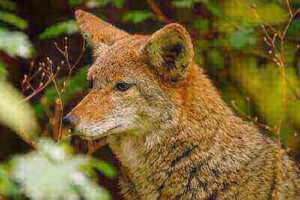
Table of Contents
How To Hunt Coyotes
1. E- Scout
Scout open fields, swamps, creek beds, meadows, clear-cuts, valleys, gullies, hollows, field edges, woodlot edges, marsh edges, and other areas for coyotes. Use Google Earth or hunting apps like onX or HuntWise. HuntWise shows the boundaries of private lands and gives the contact information of the landowners. Study the landscape to help you become familiar with it before you go hunting for coyotes.
2. Get On The Ground
After scouting the land via apps or Google Earth, get on the land and spend more time looking for signs of coyotes. Look for tracks and scat. In the last hours before dawn, scout the area and listen for the yips, yowls, and howls of coyotes. During this time of the day, they will be closer to their dens.
After the snow has fallen, drive the back roads and look for coyote tracks. They are similar to dog tracks. If you find coyote tracks, determine the direction they are going to help you know where they are coming from and where they are going.
Keep your eyes out for ravens and other predatory birds. They will usually be present when there is a carcass in the vicinity. The carcass is also an easy meal for coyotes and they will be attracted to it. If there is an absence of foxes, rabbits, and small game in the area, that is an indication that coyotes are present there.
3. Set Up Trail Cameras
Trail cameras are invaluable tools for hunters seeking to track and monitor bobcat activity in their hunting areas. These cameras, strategically placed along trails or near potential hunting sites, capture photos or videos of passing wildlife, providing valuable insights into bobcat behavior, movement patterns, and preferred habitats.
By analyzing trail camera footage, hunters can determine the frequency and timing of bobcat visits, identify high-traffic areas, and even estimate population densities. This information enables hunters to make informed decisions about where to set up blinds or traps, adjust hunting strategies, and maximize their chances of encountering bobcats during hunting expeditions.
Additionally, trail cameras allow hunters to observe bobcats without disturbing their natural habitat, offering a non-invasive method of studying these elusive predators and enhancing overall hunting success. You can read about the best trail cameras available on the market today from this link.
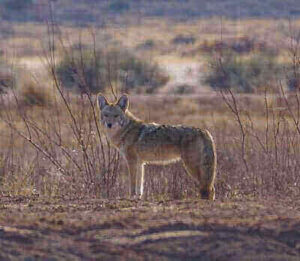
4. Wind Direction
When hunting bobcats, paying close attention to wind direction is paramount for success. Bobcats have an acute sense of smell, and they rely on it heavily to detect potential threats or prey. As such, hunters must ensure that they position themselves downwind from the area where they expect bobcats to be present.
By doing so, hunters can minimize the risk of their scent being carried toward the bobcats, which could alert the elusive predators to their presence and cause them to retreat or remain hidden. Choosing hunting locations and approaches that take prevailing wind patterns into account increases the likelihood of getting within range of bobcats without being detected, ultimately improving the chances of a successful hunt.
5. Predator Calls
You can use predator calls to get the attention of coyotes and lure them out. However, be careful not to overcall or call incorrectly as coyotes can determine “fake calls” and will just disregard your predator calls. You can use diaphragm calls, rabbit distress calls, coyote imitation calls, and other calls.
Try using distress calls that are not commonly used by hunters like turkey distress calls or woodpecker distress calls. Avoid using overused predator calls. We reviewed the best predator calls on the market today and you can find it here.
6. Decoys
Using decoys can be an effective strategy when hunting for bobcats. Decoys, typically resembling small mammals or birds that bobcats prey upon, can lure these elusive predators into the open, providing hunters with a clear shot opportunity.
Placing decoys strategically in areas known to be frequented by bobcats, such as near game trails or in open fields, can increase the chances of attracting their attention. Additionally, incorporating motion into the decoys, such as using electronic or manually operated decoys that mimic realistic movements, can further enhance their effectiveness by adding an element of realism that can pique the curiosity of bobcats.
However, hunters should exercise caution and adhere to local regulations regarding the use of decoys to ensure ethical and responsible hunting practices.
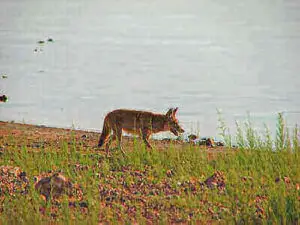
7. Nearby Landowners
The HuntWise hunting app gives you private land and its boundaries adjacent to areas that you hunt. Additionally, it also gives you the contact information for these landowners. Go meet the land owners and offer to help them with the issue of predators like coyotes hunting them on their land.
Coyotes eat everything from deer, rabbits, turkeys, etc. If the cows are calving on a nearby ranch, there is the possibility that the ranch owners have a problem with predators like coyotes and you just might be the help they need.
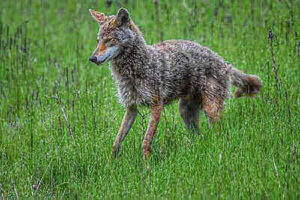
8. State Law
Be aware of your state’s law concerning hunting coyotes. Some states allow year-round hunting while it is different in other states. Some allow any weapon to hunt coyotes while there are restrictions on the weapons to use. Know the hunting laws in your state for coyotes.
9. Be Quiet
Don’t make the mistake many hunters make when they go hunting. Avoid making noise when you arrive in your vehicle. Avoid talking on the cell phone and slamming your door shut. When you scout the area, look for areas you can park that are some distance from the hunting area.
Coyotes are very smart. If they detect you from noise or your scent, they will leave the area. Try to sneak in undetected and make sure to control your human scent as well as wear camouflage clothing.
10. Find A Good Spot
Find a good spot to set up. Look for an area of high elevation with some cover to conceal you if that is possible. Also, consider the wind and make sure that you are downwind of the area you want to target. Hunting coyotes at night is also a good hunting strategy.
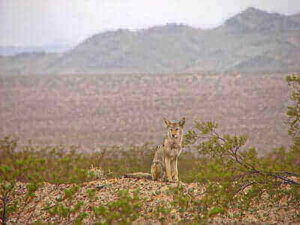
Hunting Coyotes On Public Land
1. E-Scout
The land to using Google Earth or hunting apps like HuntWIse and OnX. Find areas where coyotes can be found like open fields, swamps, creek beds, meadows, clear-cuts, valleys, gullies, hollows, field edges, woodlot edges, and marsh edges.
2. Get On The Ground
Physically get on the ground and confirm what you learned from e-scouting. Take note of the common hunting areas most hunters set up in and make notes to avoid those areas. Drive around the public ground and look for areas that have no activity and cars. Park close by and walk in quietly to study the area.
3. Talk To the Area Manager
Talk to the area manager or wildlife biologist of the public land and learn about the presence and activities of coyotes. Ask questions about coyotes in the areas to help you target them. Find out about the areas and prime time when the hunting pressure is at its peak. Also, find out what are the common preys on the public land for coyotes and where they can be found.
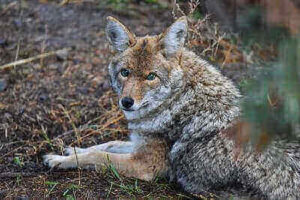
4. Public Land Rules
Learn the rules and regulations of the public land and make sure to follow them. The rules may concern season dates, weapons that can be used, bag limits, permits, etc.
5. Inaccessible Areas
From your e-scouting, confirm any hard-to-access areas that may serve as cover for coyotes. Look for back roads and other ways that you may be able to reach those areas and monitor them. Set up trail cameras in those areas if you think they show signs of coyote activity.
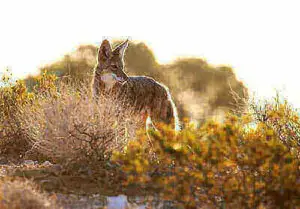
6. Nearby Landowners
From the HuntWise app, locate any private land that may be nearby the public land that may attract coyotes. Contact the landowners and offer to hunt coyotes on their land. The landowners may be experiencing problems with coyotes.
7. Avoid Regular Hunting Days
Find out when most of the hunting is done on the public land and try to schedule your hunting on other days. If it is possible, go hunting midweek when the hunting pressure is not high and many of the hunters are not hunting.
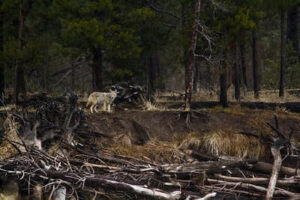
Coyote Hunting Tips For Beginners
1. Learn the state law concerning hunting coyotes. When you are learning how to hunt coyotes, you don’t want to do anything illegal.
2. Scout the area you want to hunt coyotes and look for areas like swamps, open fields, meadows, marsh edges, valleys, and clear-cuts.
3. Look for signs of coyotes like tracks and scat. Learning how to hunt coyotes involves carefully studying the area for any signs of coyote activity.
4. Drive on back roads after snow and look for coyote tracks. Take note of where the tracks are coming from and where they are going.
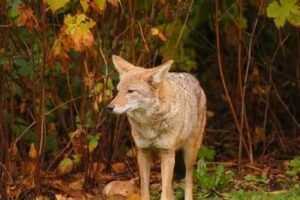
5. Look out for ravens and other predatory birds feeding on carcasses. The carcass will be free meals for coyotes.
6. Set up trail cameras to collect information on coyotes. When you are learning how to hunt coyotes, trail cameras can help you with information on their behaviors and movements. With this information, you can pattern them and set up where they usually travel.
7. Find a good spot to set up. A high-elevation area with some cover is ideal.
8. Use predator calls to get the attention of coyotes and lure them into the shooting range. Predator calls are great for hunting and when you are learning how to hunt coyotes, you can use them to lure coyotes into your shooting range.
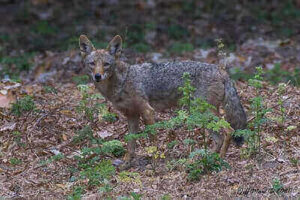
9. Use decoys to also lure coyotes into the shooting range. Decoys are also used to lure them when you are learning how to hunt coyotes.
10. Make sure you are downwind of the coyotes to prevent them from picking up your human scent. Coyotes, like most animals, have a good sense of smell. When you are learning how to hunt coyotes, always be mindful of the wind direction and make sure it is not taking your scent to them.
11. Ask landowners for permission to hunt coyotes on their properties.
12. Coyotes have a phenomenal sense of smell and eyesight. Remember this as you hunt them.
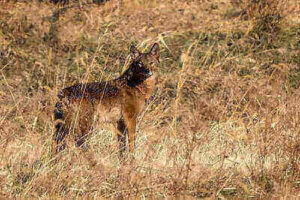
13. Coyotes are very smart predators. You will learn this about coyotes and when learning how to hunt coyotes, just remember that they are wily animals.
14. Coyotes adapt quickly and eat almost anything to survive.
15. Quietly sneak into your position and remain silent as you wait for coyotes.
16. Wear camouflage clothing that blends well with the area you hunt for coyotes.
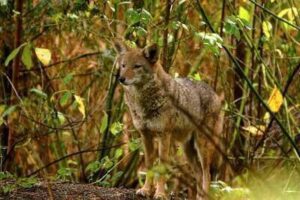
The Bottom Line
Coyotes are very smart predators. They have a very good sense of smell and eyesight. They also adapt quickly to new habitats and eat anything to survive. When you hunt coyotes, you need to find areas where they can be found, which calls to make, how to position yourself with respect to the wind, and decoys that can be used to lure them out.
In this article, we discussed how to hunt coyotes so you can be successful with hunting coyotes. You can also read how to hunt wolves, how to hunt cougars, how to hunt bobcats, how to hunt red fox, and how to hunt fox.
